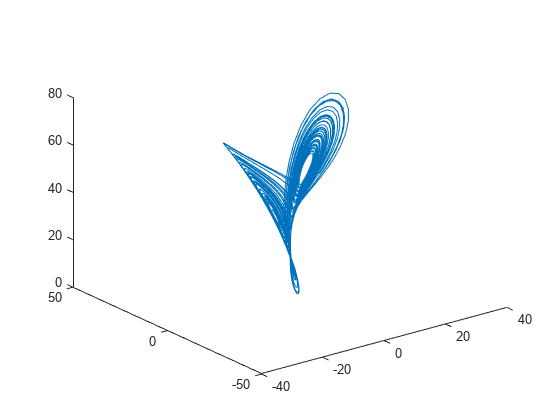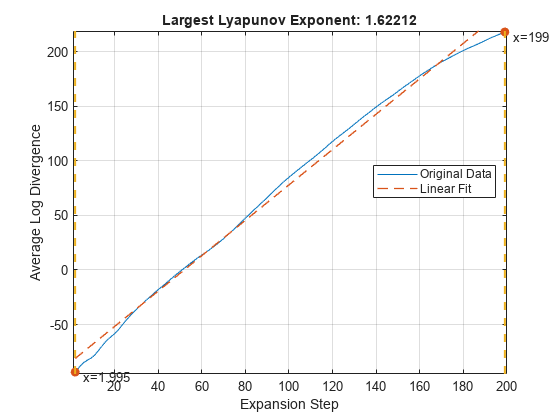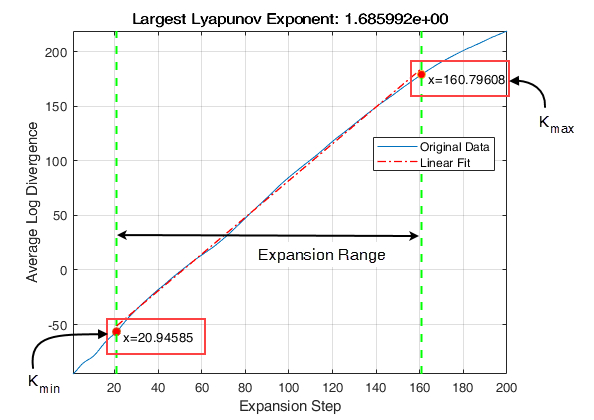lyapunovExponent
무한히 가까운 궤적의 분리율 특성화
구문
설명
___ = lyapunovExponent(___,는 하나 이상의 Name,Value)Name,Value 쌍의 인수로 지정된 추가 옵션을 사용하여 랴푸노프 지수를 추정합니다.
lyapunovExponent(___)(출력 인수 없음)는 확장 스텝에 대한 평균 로그 발산 플롯을 만듭니다.
생성된 대화형 방식 플롯을 사용하여 적절한 ExpansionRange를 찾습니다.
예제
입력 인수
이름-값 인수
출력 인수
알고리즘
랴푸노프 지수는 다음과 같은 방법으로 계산됩니다.
lyapunovExponent함수가 먼저 임베딩 차원 m과 지연 τ를 사용하여, 지연된 재구성 Y1:N을 생성합니다.그런 다음 소프트웨어에서 점
i에 대해 를 충족하는 최근접이웃 점 i*를 찾습니다. 이 때, 이며, 평균 주기인MinSeparation은 평균 주파수의 역수입니다.[1]에서, 전체 확장 범위에 대한 랴푸노프 지수는 다음과 같이 계산됩니다.
여기서 Kmin과 Kmax는
ExpansionRange를 나타내고dt는 샘플링 시간이며 입니다.그런 다음 위 단계에서 계산된 랴푸노프 지수에 대한 단일 값을 다음
polyfit명령을 사용하여 계산합니다.
참고 문헌
[1] Michael T. Rosenstein , James J. Collins , Carlo J. De Luca. "A practical method for calculating largest Lyapunov exponents from small data sets ". Physica D 1993. Volume 65. Pages 117-134.
[2] Caesarendra, Wahyu & Kosasih, P & Tieu, Kiet & Moodie, Craig. "An application of nonlinear feature extraction-A case study for low speed slewing bearing condition monitoring and prognosis." IEEE/ASME International Conference on Advanced Intelligent Mechatronics: Mechatronics for Human Wellbeing, AIM 2013.1713-1718. 10.1109/AIM.2013.6584344.
[3] McCue, Leigh & W. Troesch, Armin. (2011). "Use of Lyapunov Exponents to Predict Chaotic Vessel Motions". Fluid Mechanics and its Applications. 97. 415-432. 10.1007/978-94-007-1482-3_23.
확장 기능
버전 내역
R2018a에 개발됨


